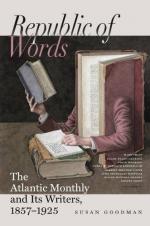The Methodists are probably the first and only Englishmen who have worshipped in the open air since the ancient Britons listened to the preaching of the Druids; and it reminded me of that old priesthood, to see certain memorials of their dusky epoch—not religious, however, but warlike—in the neighborhood of the spot where the Methodist was holding forth. These were some ancient burrows, beneath or within which are supposed to lie buried the slain of a forgotten or doubtfully remembered battle, fought on the site of Greenwich Park as long ago as two or three centuries after the birth of Christ. Whatever may once have been their height and magnitude, they have now scarcely more prominence in the actual scene than the battle of which they are the sole monuments retains in history,—being only a few mounds side by side, elevated a little above the surface of the ground, ten or twelve feet in diameter, with a shallow depression in their summits. When one of them was opened, not long since, no bones, nor armor, nor weapons were discovered, nothing but some small jewels, and a tuft of hair,—perhaps from the head of a valiant general, who, dying on the field of his victory, bequeathed this lock, together with his indestructible fame, to after-ages. The hair and jewels are probably in the British Museum, where the potsherds and rubbish of innumerable generations make the visitor wish that each passing century could carry off all its fragments and relics along with it, instead of adding them to the continually accumulating burden which human knowledge is compelled to lug upon its back. As for the fame, I know not what has become of it.




